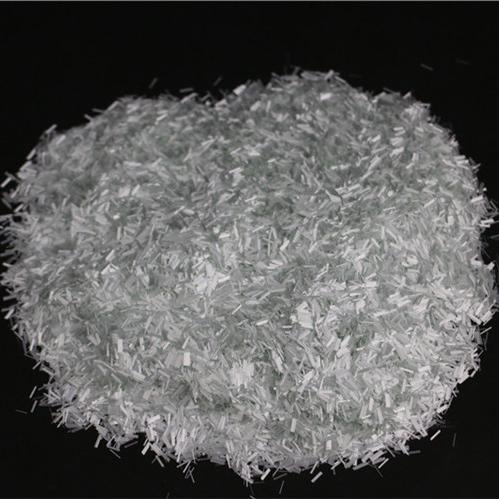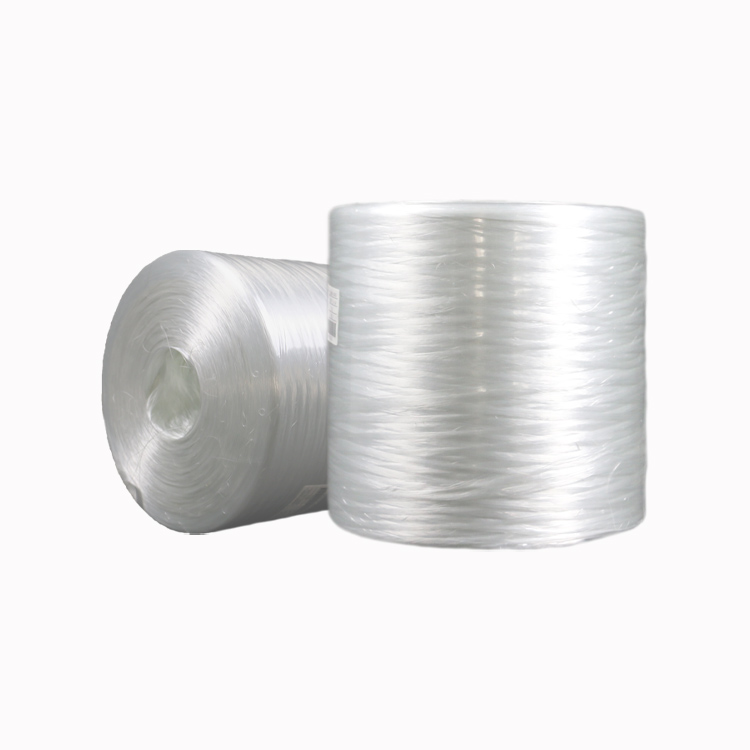Dublin, Jan. 18, 2023 (GLOBE NEWSWIRE) -- The "Fiberglass Market: Global Industry Trends, Share, Size, Growth, Opportunity and Forecast 2022-2027" report has been added to ResearchAndMarkets.com's offering. The global fiberglass market size reached US$ 11.3 Billion in 2021. Looking forward, the publisher expects the market to reach US$ 15.0 Billion by 2027, exhibiting a CAGR of 4.83% during 2021-2027.
Keeping in mind the uncertainties of COVID-19, we are continuously tracking and evaluating the direct as well as the indirect influence of the pandemic on different end use industries. These insights are included in the report as a major market contributor. Fiberglass refers to a reinforced plastic material made from glass fibers that are embedded in a resin matrix. It is widely available in the form of glass wool, direct and assembled roving, yarn, chopped strand, flattened sheets, etc. E-Glass Direct Roving Fiberglass

Fiberglass is lightweight, cost-effective, corrosion-resistant, durable, and provide high electrical insulation. It is widely adopted over conventional materials, such as aluminum and steel, based on its improved energy-efficiency and ecological sustainability. As a result, fiberglass finds extensive applications across diverse industries, such as construction, automotive, aerospace and defense, electronics, etc. Fiberglass Market Trends: With the rising environmental concerns, there is an increasing demand for lightweight composite materials across numerous industries for reducing carbon footprints. Moreover, the growing construction of smart infrastructures is also propelling the adoption of fiberglass for controlling overheating and maintaining the room temperature.
In line with this, several government bodies across the globe are increasingly investing in the sustainable development of green and energy-efficient buildings, thereby catalyzing the demand for fiberglass. Additionally, the rising number of refurbishment and remodeling activities has led to the replacement of conventional building materials with fiberglass in floor coverings, walls, windows, panels, etc., to provide better insulation and enhanced structural stability.
Apart from this, a significant growth in the renewable energy sector is further bolstering the product demand for manufacturing various electrical equipment to harness clean and safe energy sources, such as wind and tidal.
Moreover, the expanding automotive industry along with the increasing demand for fuel-efficient vehicles is also augmenting the usage of fiberglass in body panels, panel assemblies, wheelhouse assemblies, battery boxes, front fascia, etc. Besides this, fiberglass is continuously replacing metal-based alternatives in pipes, tanks, subsea systems, etc., across the water treatment and oil & gas sectors. All of these-above mentioned factors will continue to drive the global market for fiberglass in the coming years.
Competitive Landscape: The competitive landscape of the industry has also been examined with some of the key players being Asahi Fiber Glass Co. Ltd. (Yoshino Gypsum Co. Ltd.), Braj Binani Group, China Jushi Co. Ltd., Chongqing Polycomp International Corp. (Yuntianhua Group Co. Ltd.), Compagnie De Saint-Gobain S.A., Johns Manville (Berkshire Hathaway Inc.), Knauf Insulation, Nippon Electric Glass Co. Ltd., Owens Corning, PFG Fiber Glass Corporation (Nan Ya Plastics Corporation), Taishan Fiberglass Inc. (Sinoma Science & Technology Co. Ltd.) and Taiwan Glass Industry Corporation. Key Questions Answered in This Report:
How has the global fiberglass market performed so far and how will it perform in the coming years?
What has been the impact of COVID-19 on the global fiberglass market?
What are the key regional markets?
What is the breakup of the market based on the glass product type?
What is the breakup of the market based on the glass fiber type?
What is the breakup of the market based on the resin type?
What is the breakup of the market based on the application?
What is the breakup of the market based on the end user?
What are the various stages in the value chain of the industry?
What are the key driving factors and challenges in the industry?
What is the structure of the global fiberglass market and who are the key players?
What is the degree of competition in the industry?
Estimated Market Value (USD) in 2021
Forecasted Market Value (USD) by 2027
Key Topics Covered: 1 Preface 2 Scope and Methodology 2.1 Objectives of the Study 2.2 Stakeholders 2.3 Data Sources 2.3.1 Primary Sources 2.3.2 Secondary Sources 2.4 Market Estimation 2.4.1 Bottom-Up Approach 2.4.2 Top-Down Approach 2.5 Forecasting Methodology 3 Executive Summary 4 Introduction 4.1 Overview 4.2 Key Industry Trends 5 Global Fiberglass Market 5.1 Market Overview 5.2 Market Performance 5.3 Impact of COVID-19 5.4 Market Forecast 6 Market Breakup by Glass Product Type 6.1 Glass Wool 6.1.1 Market Trends 6.1.2 Market Forecast 6.2 Direct and Assembled Roving 6.2.1 Market Trends 6.2.2 Market Forecast 6.3 Yarn 6.3.1 Market Trends 6.3.2 Market Forecast 6.4 Chopped Strand 6.4.1 Market Trends 6.4.2 Market Forecast 6.5 Others 6.5.1 Market Trends 6.5.2 Market Forecast 7 Market Breakup by Glass Fiber Type 7.1 E-Glass 7.1.1 Market Trends 7.1.2 Market Forecast 7.2 A-Glass 7.2.1 Market Trends 7.2.2 Market Forecast 7.3 S-Glass 7.3.1 Market Trends 7.3.2 Market Forecast 7.4 AR-Glass 7.4.1 Market Trends 7.4.2 Market Forecast 7.5 C-Glass 7.5.1 Market Trends 7.5.2 Market Forecast 7.6 R-Glass 7.6.1 Market Trends 7.6.2 Market Forecast 7.7 Others 7.7.1 Market Trends 7.7.2 Market Forecast 8 Market Breakup by Resin Type 8.1 Thermoset Resin 8.1.1 Market Trends 8.1.2 Market Forecast 8.2 Thermoplastic Resin 8.2.1 Market Trends 8.2.2 Market Forecast 9 Market Breakup by Application 9.1 Composites 9.1.1 Market Trends 9.1.2 Market Forecast 9.2 Insulation 9.2.1 Market Trends 9.2.2 Market Forecast 10 Market Breakup by End User 10.1 Construction 10.1.1 Market Trends 10.1.2 Market Forecast 10.2 Automotive 10.2.1 Market Trends 10.2.2 Market Forecast 10.3 Wind Energy 10.3.1 Market Trends 10.3.2 Market Forecast 10.4 Aerospace and Defense 10.4.1 Market Trends 10.4.2 Market Forecast 10.5 Electronics 10.5.1 Market Trends 10.5.2 Market Forecast 10.6 Others 10.6.1 Market Trends 10.6.2 Market Forecast 11 Market Breakup by Region 12 SWOT Analysis 13 Value Chain Analysis 14 Porters Five Forces Analysis 15 Price Analysis 16 Competitive Landscape 16.1 Market Structure 16.2 Key Players 16.3 Profiles of Key Players 16.3.1 Asahi Fiber glass Co. Ltd. (Yoshino Gypsum Co. Ltd.) 16.3.1.1 Company Overview 16.3.1.2 Product Portfolio 16.3.2 Braj Binani Group 16.3.2.1 Company Overview 16.3.2.2 Product Portfolio 16.3.3 China Jushi Co. Ltd. 16.3.3.1 Company Overview 16.3.3.2 Product Portfolio 16.3.4 Chongqing Polycomp International Corp. (Yuntianhua Group Co. Ltd.) 16.3.4.1 Company Overview 16.3.4.2 Product Portfolio 16.3.5 Compagnie De Saint-Gobain S.A. 16.3.5.1 Company Overview 16.3.5.2 Product Portfolio 16.3.5.3 Financials 16.3.5.4 SWOT Analysis 16.3.6 Johns Manville (Berkshire Hathaway Inc.) 16.3.6.1 Company Overview 16.3.6.2 Product Portfolio 16.3.6.3 Financials 16.3.6.4 SWOT Analysis 16.3.7 Knauf Insulation 16.3.7.1 Company Overview 16.3.7.2 Product Portfolio 16.3.8 Nippon Electric Glass Co. Ltd. 16.3.8.1 Company Overview 16.3.8.2 Product Portfolio 16.3.8.3 Financials 16.3.9 Owens Corning 16.3.9.1 Company Overview 16.3.9.2 Product Portfolio 16.3.9.3 Financials 16.3.9.4 SWOT Analysis 16.3.10 PFG Fiber Glass Corporation (Nan Ya Plastics Corporation) 16.3.10.1 Company Overview 16.3.10.2 Product Portfolio 16.3.11 Taishan Fiberglass Inc. (Sinoma Science & Technology Co. Ltd.) 16.3.11.1 Company Overview 16.3.11.2 Product Portfolio 16.3.12 Taiwan Glass Industry Corporation 16.3.12.1 Company Overview 16.3.12.2 Product Portfolio 16.3.12.3 Financials

Glass Fiber Woven Fabric For more information about this report visit https://www.researchandmarkets.com/r/axv0pt